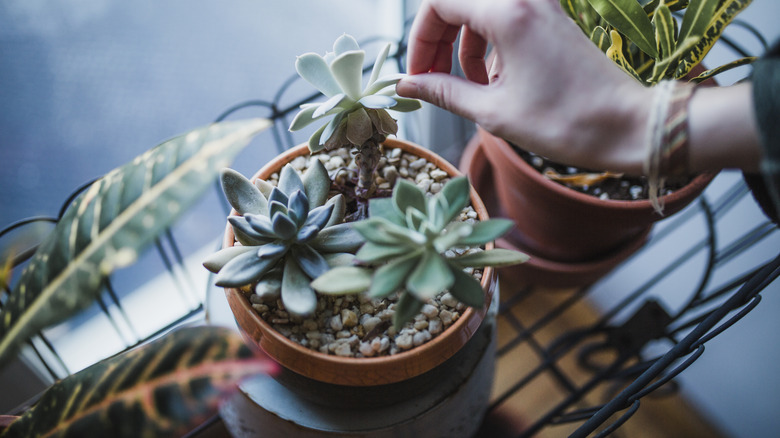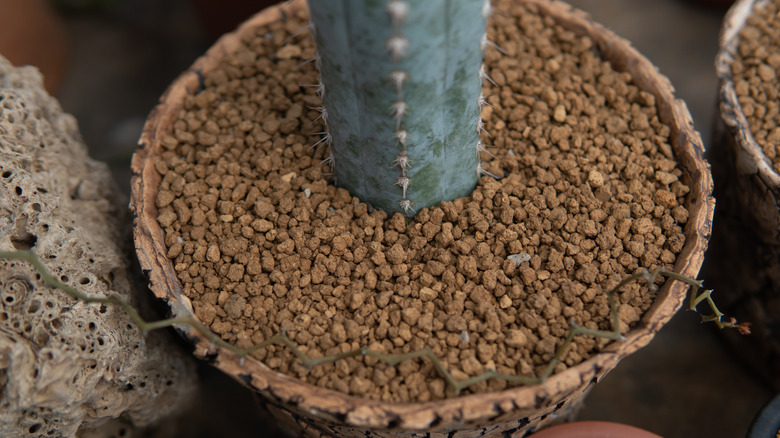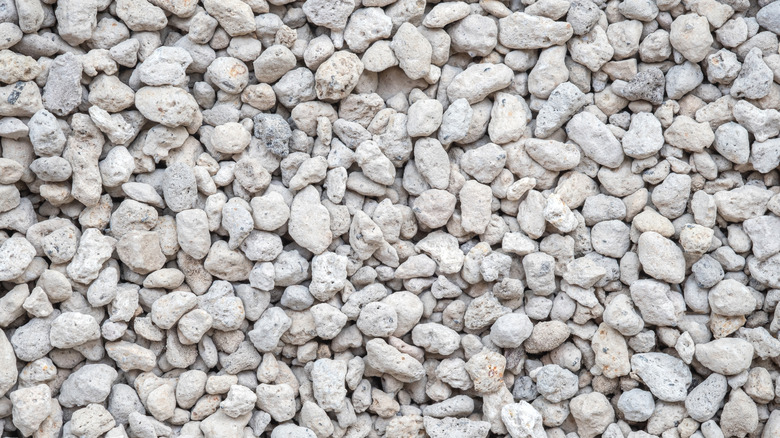Why Pumice Soil Is Perfect For Succulents
Pumice — a lightweight, porous volcanic rock that looks like it should feel like a sponge, and belongs to the group of draining mediums alongside perlite and leca balls — has gained popularity for use in succulents and cacti due to its drainage and moisture retention abilities. Pumice's tiny surface pores and trapped gas bubbles allow for slow and controlled moisture release, acting as reservoirs for water and nutrients. When pumice is mixed into the soil, it promotes efficient water drainage, which prevents soil from becoming overly dry or saturated.
This lightweight igneous rock also helps aerate the soil, which aids in stronger root systems and aids in the prevention of soil compaction over a period of time. By properly incorporating pumice into your gardening routine, you can minimize the chances of overwatering your plants and establish an optimal environment for promoting healthy root growth. It's available in various sizes, with finer grains being ideal for succulents grown in containers, and larger nuggets being better suited for garden beds.
Using pumice as a substrate
If you're prone to overwatering your succulents or live in a humid environment, planting them in pumice can be a game-changer. Succulents require well-draining soil to thrive, and pumice is an excellent choice for achieving this. However, using pumice as the sole substrate isn't recommended because it may not retain enough water for your succulents' needs. You would have to water it daily to prevent dehydration. (Here are some other substrate choices you can consider.)
Since pumice doesn't retain water as effectively as other soil components, mixing it with perlite, compost, or garden soil will help to improve drainage. Another thing to keep in mind is that different succulent varieties have specific soil mixture ratios. The overall general recommendation is half potting soil and half pumice.
Plump succulents like euphorbias benefit from a mixture of one part potting soil to two parts pumice, while succulents with thin leaves, like sedums, thrive with one part pumice and two parts potting soil. For succulents that can't tolerate wet soil, you can boost drainage by using a 25% ratio of pumice, potting soil, sand, and compost. Smaller grains of pumice also make for a useful topdressing and absorb stagnant water. This actually creates vertical tunnels that surround the root systems, providing better aeration without any damage.
Using pumice in your garden
Pumice has various garden uses, making it versatile and valuable to have on hand. Because of its moisture retention ability, you can place it in areas of your garden that are prone to water accumulation. This improves drainage and creates a healthier environment for plant growth. Pumice acts as a protective barrier, reducing evaporation and retaining moisture in the soil. By spreading a layer of pumice on the soil surface around your plants, you can enjoy its natural mulching properties. It also helps suppress weed growth and adds to your garden's visual aesthetic.
It's also ideal for creating garden pathways and stepping stones. Pumice's lightweight nature makes it easy to handle, and its rough texture provides excellent traction and grip. Because it comes in a few different neutral hues (including red), you can use pumice to make visually appealing walkways and footpaths around your home. They also will keep the ground from becoming overly saturated, which means fewer muddy walks. Because pumice also has abrasive qualities, you can also use it to clean rust off your gardening tools.


